
A comparison between two digital printing methods: Direct-to-Garment and Dye Sublimation. This guide will help you to choose printing method for your business model – listing the pros and cons of each method, the materials needed and the feasibility of each method.
What to go for – DTG or Dye Sublimation?
Direct to Garment (DTG) and Dye-Sublimation are two different digital printing methods to print on textiles or fabrics. Both methods can actually work in parallel and they are also meant for different applications.
When you decide on purchasing a printer you obviously need to examine:
- What are your needs?
- What applications do you prefer?
- What is your targeted market?
Basically, the major difference is the type of materials you can print on. Let’s go through some basics for both methods.
Direct–to–garment or DTG Printing
A modern method of printing where your artwork is directly printed onto the garment. You just need to have a computer in order to have it printed on the DTG printer. You can print whatever designs you can think of directly onto the garment.
Regarding the materials, you can print on dark or light colored T Shirts, cushions, jeans or any 100% cotton or a blend of cotton and polyester. As the development of the printers and inks advances, the Direct to Garment printers are becoming more suitable to print on Polyester, as well as Synthetics. Direct-to-Garment printers uses a water based CMYK (which stands for the colors Cyan, Magenta, Yellow and Black) and White Pigment Ink, so these inks can print on Light color garments as well as dark ones.
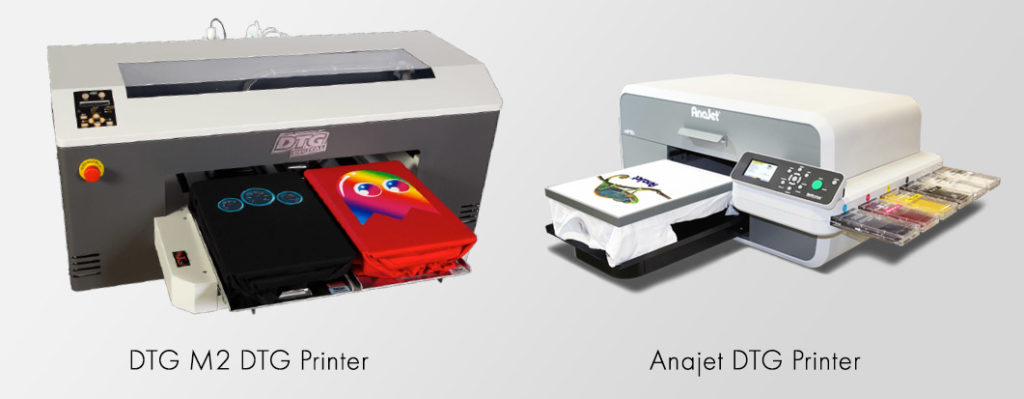
DTG printing Process
1. Design |
2. Print |
3. Press |
 |
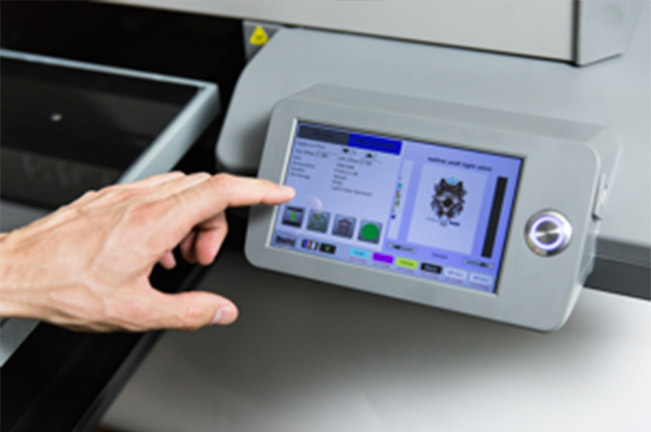 |
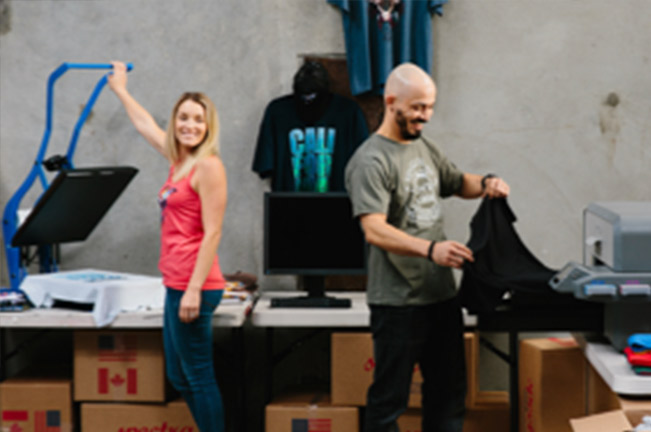 |
Design an artwork in your PC |
Load your garment onto the printer and print it |
Heat press for 60 seconds to heat-cure the ink to the garment |
- Design your artwork from any imaging software, followed by using the RIP software, so the RIP Software is basically the software used to determine the quality settings you prefer that will be printed onto your garment, so the settings could be on draft mode for higher production or on a higher quality resolution to get an excellent printout quality. It is your choice to either compromise high quality or time and money. This software can also determine how much the print settings will cost you.
- Loading your garment onto the DTG Printer and going ahead with the printing using CMYK ink on light garment, whereas for the Dark Garments White ink prints as an underbase layer then the CMYK ink. For dark garments, its recommended to pretreat so the garments will be prepared for printing.
- Heat pressing – it’s pretty simple you just proceed to heat press the garment for about 60 seconds to cure the inks or you may also use tunnel dryers.
Dye-Sublimation
Dye-sublimation printing is also a digital printing technology that uses full color artwork which will work with polyester and polymer-coated substrates.
But in this method, you need to print on transfer paper using dye sublimation printer, then sublimate the inks printed on the transfer paper to the fabric. So basically, it’s a two-step process.
Now in Dye-sublimation, the material that is ideally used is a white 100% Polyester, or a blend with cotton. Such the ones you see on sportswear, or on fashion. Also, it could be on a white polymer coated hard materials as well. Such as, plastic mobile covers, ceramic mugs, or special metal sheets.
Dye-Sublimation uses CMYK dye sublimation inks that can print on white and light colored textiles.
Dye-Sublimation Process
1. Design |
2. Print |
3. Transfer |
 |
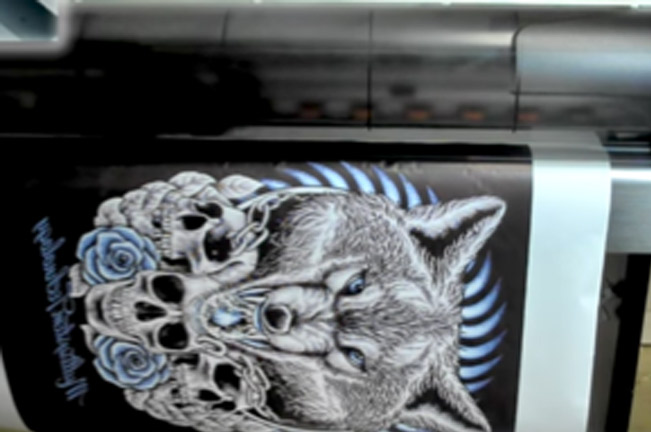 |
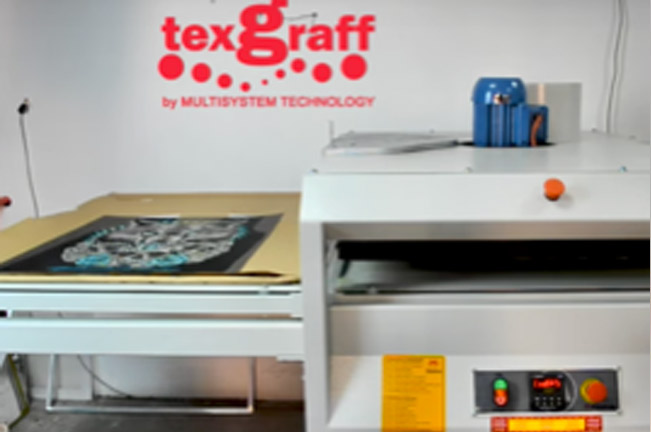 |
| Design an artwork in your PC | Print your design on transfer sublimation paper | Transfer by heat press or roll-to-roll calendar |
Dye-Sublimation process is similar to the DTG printing process:
- Design your artwork and open it on the RIP software.
- Print your design on the sublimation transfer paper. You can control the setting and the quality as similar to DTG.
- Sublimate by using a flat heat press like Xpress M110 or a roll to roll calendar like the ThermTX 44. So the image will be transferred from the paper to the fabric.

DTG Pros & Cons
| Pros | Cons |
|
|
Dye-Sublimation Transfer – Pros & Cons
| Pros | Cons |
|
|
DTG Pretreating Made Easy
As mentioned about printing using DTG printer, pretreatment is essential on dark colored garments. Pretreatment can be used manually, by spray. However, that does not really give an even distribution on the garment, thus a pretreatment machine is used for a faster and consistent pretreatment on the shirt to improve the efficiency of working on DTG Printing. In relation to that using the pretreatment machine also reduces the wastage of spraying the pretreatment onto the garment. Operating the pretreatment machine is simple, it functions efficiently and sprays evenly onto the garment which makes you have perfect pretreatment every time and thus printing good quality t-shirts.
|
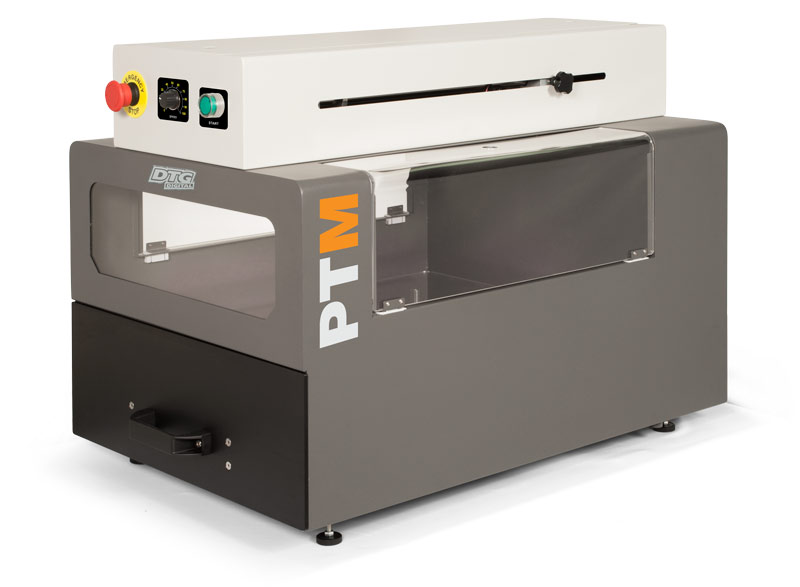 |
